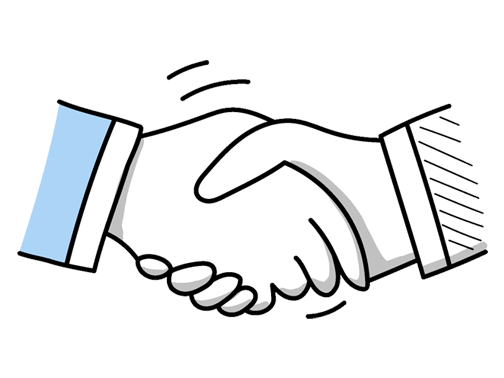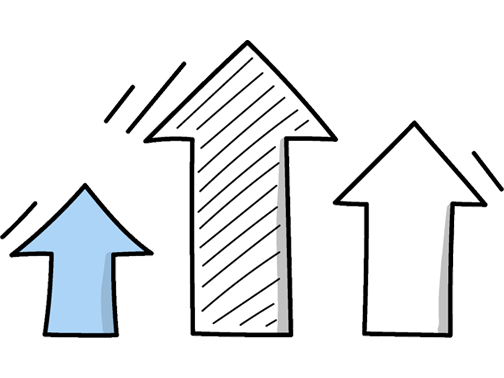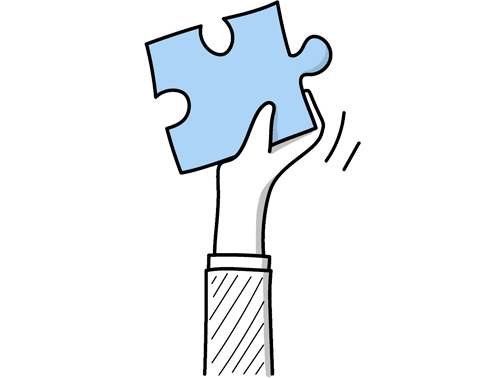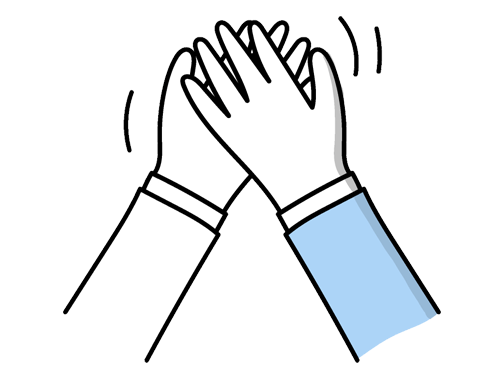Fine Artist Interview Questions (2025 Guide)
Find out common Fine Artist questions, how to answer, and tips for your next job interview
Practice Interviews Online - Identify your strengths and weakness in a realistic Fine Artist mock interview, under 10 minutes
Practice Now »Fine Artist Interview Questions
Interviewers ask this to see how well you work with others and contribute to a shared vision. You should briefly describe the project, your role, and how you communicated or adapted to support the team's goals.
Example: Sure. Recently, I worked with a group of local artists to create a mural celebrating community diversity. We each brought different styles and ideas, which challenged me to adapt and blend my approach. The experience taught me the value of open dialogue and flexibility, resulting in a piece that felt truly collective and meaningful for everyone involved.
Interviewers ask this question to understand your problem-solving skills and resilience in your artistic journey. You need to briefly describe a specific challenge you faced, explain the steps you took to overcome it, and highlight what you learned from the experience to show your growth as an artist.
Example: One challenge I faced was balancing creative freedom with client expectations. I tackled this by improving communication, ensuring I understood their vision while staying true to my style. This approach led to more satisfying collaborations and helped me grow both artistically and professionally. It taught me that openness and flexibility can enhance creativity rather than limit it.
What they want to understand is your long-term vision and commitment to your art career. You need to show clear goals, like developing your style, exhibiting your work, and growing your audience.
Example: In the next five years, I hope to develop a strong personal style that resonates with a wider audience, while also collaborating with galleries and art communities across the UK. I’d like to explore new mediums and participate in exhibitions that challenge me creatively. Building meaningful connections, much like the artists I admire, will be key to growing both my practice and presence in the art world.
Interviewers ask this to understand your vision and commitment to your art career. You need to express a clear plan for growth and how you aim to impact the art world over time.
Example: Over time, I hope to develop a distinct voice that resonates with diverse audiences, exploring new media and styles along the way. I’m keen to exhibit widely, not just in galleries but also in community spaces, making art accessible. Ultimately, I want my work to inspire reflection and conversation, much like how certain pieces have deeply moved me throughout my journey.
Hiring managers ask this question to understand how you organize your creative work and handle challenges. You need to explain how you develop ideas, choose materials, and refine your piece until it's finished.
Example: My creative process usually begins with inspiration drawn from everyday moments or personal experiences. I sketch ideas to explore different directions, then experiment with materials to see what best expresses the concept. As the work develops, I stay open to changes, letting the piece evolve naturally. For example, in a recent series, unexpected textures led me to rethink the whole composition, which ended up stronger because of that flexibility.
Employers ask this to see how you sustain creativity and commitment in your work. You should explain that you stay inspired by exploring diverse art forms and cultures, set personal goals to push your growth, and maintain a consistent routine to overcome blocks and stay disciplined.
Example: I find inspiration by immersing myself in everyday moments—whether it’s a walk through the city or a conversation overheard in a café. My motivation comes from wanting to explore and express the complexities of human experience. When creative blocks happen, I step back, experiment with different materials, or revisit old sketches, which often sparks fresh ideas and helps me maintain focus and discipline in my work.
Questions like this help interviewers understand your technical skills and how you incorporate technology into your creative process. You should clearly mention the specific software you use, like Adobe Photoshop or Procreate, and briefly explain how these tools help you experiment or refine your artwork.
Example: I often use Adobe Photoshop and Procreate to sketch ideas and experiment with colours before moving to physical media. These tools help me explore compositions quickly and refine details that might be harder to adjust on canvas. I’m also comfortable learning new software as needed, which keeps my process fresh and adaptable to different project demands or technologies that emerge.
Questions like this assess your dedication to growth and how your learning goals support your artistic journey. You should express eagerness to explore new mediums or techniques and explain how these skills will enhance your current style or career path.
Example: I’m keen to explore more digital techniques, like integrating virtual reality into my practice, as it’s reshaping how we experience art. I also want to deepen my understanding of contemporary art movements to keep my work relevant and engaging. Learning from diverse approaches not only challenges me creatively but also helps me grow, ensuring my art continues to evolve in meaningful ways.
This question helps interviewers understand how engaged and relevant your art is to the world around you. You need to explain how specific current events or social issues inspire your themes or messages, and briefly describe an artwork that reflects these influences.
Example: Current events often act as a backdrop to my work, inspiring themes that resonate with today's society. For example, recent discussions around climate change encouraged me to explore nature’s fragility through texture and muted colors. Over time, my art has grown to reflect shifting social attitudes, offering a visual dialogue that invites viewers to consider these challenges from a personal perspective.
Interviewers want to understand how your work connects with and impacts others beyond just aesthetics. You need to say how your art reflects, challenges, or supports community values and inspires or engages people in meaningful ways.
Example: I see my art as a spark for conversation and connection, inviting people to see familiar surroundings in new ways. Whether it’s a mural that brightens a neighbourhood or a piece that reflects shared stories, art can create a sense of belonging and inspire thoughtful reflection. It’s about opening doors to dialogue and making everyday spaces feel more alive.
Hiring managers ask this to see how you use color intentionally to evoke emotions and balance compositions. You should explain that you consider color harmony, contrast, and the psychological impact of colors to strengthen your artwork’s message.
Example: I see color as a key storyteller in my work. I enjoy experimenting with contrasts and harmonies to evoke mood—like using warm tones to create intimacy or cooler shades for calmness. Sometimes I let intuition lead, allowing colors to evolve naturally on the canvas, which often brings unexpected, vibrant results that resonate emotionally with the viewer.
Interviewers ask this to see your versatility and adaptability as an artist. You need to highlight the mediums you’ve worked with and explain how each has shaped your creative process or style.
Example: I've worked with a variety of mediums throughout my career, from traditional oil paints to mixed media installations. For example, combining acrylics with found objects allows me to explore texture and depth in unique ways. I also enjoy experimenting with digital art, which offers a fresh perspective and new techniques. This range helps me adapt my style to different concepts and keeps my creative process dynamic.
Interviewers ask this question to see if you have a clear strategy for growing your audience and can adapt your work and marketing to new opportunities. You need to explain specific plans for targeting new groups or places and give examples of how you've creatively expanded your reach before.
Example: To grow my audience, I blend evolving themes with fresh techniques, ensuring my work stays relevant and engaging. I’ve partnered with local galleries and used social media campaigns to connect with new viewers, which boosted attendance and sales before. Exploring collaborations outside traditional art spaces, like community events or digital platforms, also helps introduce my work to diverse groups and keeps the connection dynamic.
This interview question aims to understand how you handle challenges and maintain productivity when inspiration is lacking. You need to say that you use specific techniques like changing your environment or seeking new influences to refresh your creativity and keep moving forward.
Example: When I hit a creative block, I usually step back and change my environment—taking a walk or visiting a gallery often sparks new ideas. Sometimes, experimenting with a different medium or revisiting old work helps me see things differently. I find that giving myself space without pressure allows ideas to flow naturally again. It’s about trusting the process and staying curious rather than forcing inspiration.
What they want to know is how your work has been professionally recognized and how these opportunities have influenced your growth as an artist. You need to mention specific exhibitions or galleries where your work has been shown and briefly explain how these experiences contributed to your artistic development or network.
Example: My work has been featured in several local galleries, including the Bluecoat in Liverpool and the Tate Exchange in London, which helped me connect with diverse audiences and fellow artists. Participating in group exhibitions like those at the Saatchi Gallery also opened doors to collaborative projects and private sales, enriching my practice both creatively and professionally. These experiences have been invaluable in shaping my artistic journey.
Questions like this help interviewers understand your creative process and what you value in your work. When answering, clearly describe the piece, why it matters to you, and the techniques or ideas that make it special.
Example: One piece I’m quite proud of is a mixed-media portrait exploring identity. It combines traditional painting with collage elements, reflecting layered experiences. Working on it challenged me to blend different techniques seamlessly, and the final result sparked thoughtful conversations during an exhibition. It’s rewarding when art invites viewers to connect deeply, and this piece does that in a way that feels authentic to my creative voice.
Hiring managers ask this question to see how well you understand your artistic influences and how they shape your unique style and growth. In your answer, clearly name specific artists and explain how their techniques or ideas have impacted your work and artistic development.
Example: Artists like Francis Bacon and Bridget Riley have shaped my approach—Bacon’s raw emotion inspires my use of texture, while Riley’s optical work influences my play with movement and perception. Their distinct ways of expressing complex feelings encourage me to explore personal themes with both intensity and subtlety, helping me find a balance between chaos and control in my own creative process.
Employers ask this to understand how your creativity is fueled beyond traditional art forms, showing depth and originality in your work. You need to explain how specific non-artistic influences like nature or music impact your creative process and emotional connection, and how these sources make your art unique.
Example: I often draw inspiration from everyday moments—like the rhythm of city life or the changing seasons. These experiences shape my perspective and infuse my work with a sense of movement and emotion. For example, the way light shifts through trees on a windy day can inspire texture and depth in a piece. This personal connection helps me create work that feels both unique and deeply grounded in real life.
This question assesses your ability to grow and improve by embracing constructive criticism. You should explain how you thoughtfully reflect on feedback and use it to make meaningful changes in your artwork.
Example: I see feedback as an essential part of my creative process. When I receive input, I take time to reflect on it and consider how it aligns with my vision. For example, during a recent exhibition, a curator’s suggestions helped me rethink colour choices, which added more depth to the final pieces. It’s about balancing my instincts with fresh perspectives to keep growing as an artist.
Employers ask this to understand how thoughtfully you approach your creative process and adapt your techniques to best express your ideas. You should explain that you choose your medium based on the concept or emotion you want to convey, practical factors like materials or workspace, and share a specific example where your choice improved the impact of your work.
Example: When choosing a medium, I consider what best expresses the feeling or idea behind the piece. Sometimes a rough texture in charcoal brings raw emotion, while oil paints suit layered, reflective work. Practical things like available materials or my workspace also play a role. Once, using mixed media helped deepen a project's impact, making the concept more tangible and engaging for viewers.
Hiring managers ask this question to understand how you approach your art and solve problems creatively. You need to clearly describe your idea generation, choice of materials and techniques, and explain any challenges you faced along the way with your solutions.
Example: Certainly. Recently, I worked on a mixed-media piece exploring urban nature. I began with sketches, experimenting with layering acrylic and collage to create texture. Midway, I struggled with balancing detail and abstraction but resolved it by stepping back regularly and adjusting the focus. This iterative process helped the work feel both vibrant and cohesive, reflecting the complexity I wanted to capture. It was a rewarding challenge that deepened my approach to layering and composition.
What they want to understand is your personal connection to art and how it influences your creativity. You need to briefly describe the artwork, explain why it moved you, and relate its impact to your own artistic perspective or process.
Example: One piece that deeply resonated with me is J.M.W. Turner’s *The Fighting Temeraire*. Its blend of light and shadow captures a poignant transition—the old fading away as the new arrives. That reminder of change and impermanence influences how I approach my own work, embracing both tradition and innovation to tell stories that feel alive and relevant today.
What they want to hear is your understanding of how texture enhances your artwork and the technical methods you use to create it. You should explain specific techniques like impasto or layering, and briefly mention why you choose them to convey certain emotions or atmospheres.
Example: I like to explore various methods to bring texture into my pieces, such as layering thick acrylics or incorporating mixed media like fabric or sand. Choosing a technique often depends on the mood I want to convey—rough textures can evoke raw emotion, while smooth surfaces offer calmness. I enjoy experimenting with different materials and tools, which keeps my work fresh and allows me to adapt my approach to each project’s unique needs.
Interviewers ask this to see how self-aware and adaptable you are as an artist. You need to explain how your experiences or influences have shaped your style and show that you’re open to growth and experimentation.
Example: Over time, my style has shifted from strict realism to exploring more abstract forms, allowing me to express emotions and concepts more freely. Early on, I focused on detailed landscapes, but now I experiment with texture and bold colours, inspired by urban life and nature’s contrasts. This evolution reflects my growing curiosity and willingness to take risks, making each piece feel more personal and spontaneous.
Hiring managers ask this question to see if you understand the importance of protecting your work for future value and display. You need to explain that you use quality materials, proper storage, and climate control to preserve your artwork over time.
Example: When creating my work, I choose high-quality, archival materials to ensure it stands the test of time. I also pay attention to environmental factors like light and humidity during both creation and display. For example, I once advised a gallery on framing options that protect a delicate piece from UV damage, helping maintain its vibrancy for years. It's about combining thoughtful technique with ongoing care.
Ace your next Fine Artist interview with even more questions and answers
Common Interview Questions To Expect
The interviewer is looking for a brief overview of your background, experience, and skills relevant to the position. Focus on your artistic journey and achievements.
Example: I've been passionate about art since I was a child, and I pursued a degree in Fine Arts to further develop my skills. I have exhibited my work in several galleries and have won awards for my pieces. I am constantly inspired by the world around me and love to experiment with different mediums and techniques.
Candidates can answer by stating a specific salary range, mentioning their research on industry standards, or asking about the company's budget. Interviewers are looking for candidates who are realistic, confident, and have done their homework on salary expectations.
Example: I've done some research on industry standards for fine artists in the UK, and I'm looking for a salary in the range of £25,000 to £35,000 per year. I'm open to discussing further based on the company's budget and the specific responsibilities of the role.
The interviewer is looking for a clear explanation of the reasons behind the career change, such as new interests, skills, or opportunities. It's important to be honest and show how the change has positively impacted your career.
Example: I decided to change career paths because I wanted to explore my passion for fine art and pursue a more creative and fulfilling career. I realized that my skills and interests aligned more with the art world, and I wanted to take the opportunity to follow my dreams. Since making the change, I have been able to grow as an artist and have found more satisfaction in my work.
The interviewer is looking for examples of how you prioritize tasks, manage your time effectively, and handle stress in a fast-paced environment. Be honest and provide specific examples from your past experiences.
Example: Yes, I am able to handle multiple responsibilities at once. In my previous role as a fine artist, I had to juggle multiple projects with tight deadlines. I prioritized tasks based on urgency and importance, and effectively managed my time to ensure everything was completed on time.
Interviewees can answer by discussing a specific mistake, acknowledging responsibility, explaining how they rectified it, and highlighting lessons learned. Interviewers are looking for accountability, problem-solving skills, and ability to learn from mistakes.
Example: Yes, I once accidentally mixed the wrong colors for a commissioned painting. I took responsibility for the mistake, communicated with the client about the error, and offered to redo the piece at no extra cost. It taught me the importance of double-checking my work and communicating effectively with clients.
Company Research Tips
The company's website is a treasure trove of information. Look for details about the company's history, mission, and values. Pay special attention to their portfolio or past projects. As a fine artist, understanding the style and type of art the company produces or is associated with can give you a competitive edge. Also, check if they have any ongoing or upcoming projects.
Tip: Look for any recurring themes or styles in their work. This could indicate what they value in art and could be a talking point during your interview.
Social media platforms can provide a more informal view of the company. Look at their posts, comments, and general engagement to understand their brand personality. This can also give you an idea of their current projects, collaborations, and the type of content they value. Platforms like Instagram could be particularly useful for a fine artist as they are visually oriented.
Tip: Pay attention to the tone and style of their posts. This can give you an idea of the company culture and what they might be looking for in a team member.
Look for any recent news articles or press releases about the company. This can provide information about their latest projects, collaborations, or changes in the company. It can also give you an idea of their future direction, which can be useful in understanding where you might fit as a fine artist.
Tip: Use this information to show your knowledge about the company and express how your skills as a fine artist can contribute to their future plans.
Reach out to current or former employees or other artists associated with the company. They can provide insider information about the company culture, expectations, and the interview process. This can give you a better idea of what the company is looking for in a fine artist.
Tip: Be respectful and professional when reaching out. Use this as an opportunity to make a good impression and possibly gain a referral.
What to wear to an Fine Artist interview
- Clean, well-fitted jeans or trousers
- A smart-casual shirt or blouse
- Comfortable, clean shoes
- Avoid overly bright or distracting patterns
- Light makeup, if any
- Minimal jewellery
- Neat, clean hairstyle
- Carry a portfolio of your work
- Avoid wearing too much black
- Dress to reflect your artistic style





